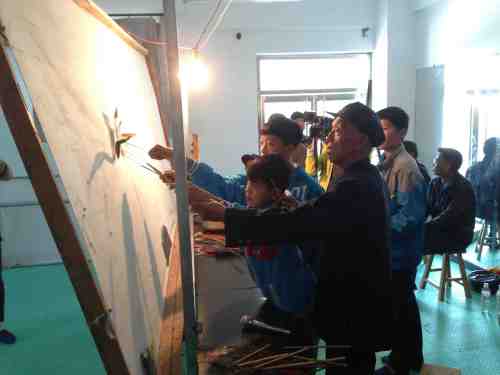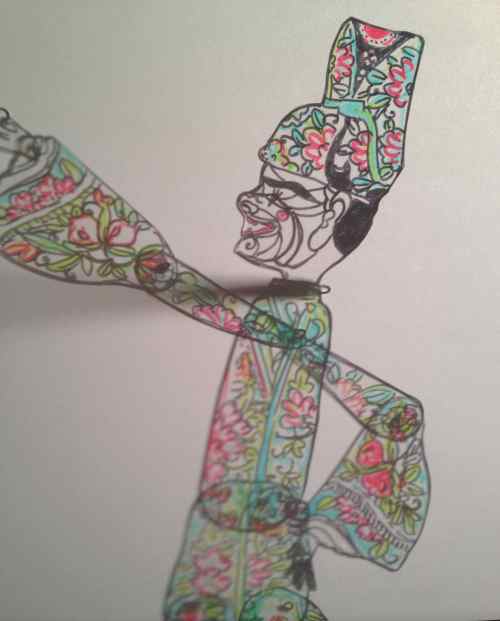In the midst of my chaotic China welcome, I snuck in a trip to the outskirts of Tangshan and an overdue visit to the Lu family cutters. It’s been almost three years since I’ve been out east of Beijing and I was anxious to check in.
I was happy to find the Lu family unchanged in the ways that matter: still ineffably warm, earnest and thriving in their multiple modalities. Both father and mother Lu, while busy helping son Tianxiang set up his new apartment in preparation for a wife, catch me up on their latest happenings. The apartment is on the fifth floor of the third building in a large complex of newly built identical high-rises, which are no stranger to the China skyline.
The apartment building is so new, there are only a few neighbors as of yet – everyone in a different state of preparation.
In the Lu’s apartment, the electric kang (traditionally a steam-heated brick bed) is the only piece of furniture in the place so far. His father is working on the baseboards, his mother on making new buckwheat husk pillows and Tianxiang is intent on patching in the light switches. The pride of having his own place shows in Tianxiang. He lights up when he talks about how he’ll decorate the walls with his father’s shadow puppetry and display his cutting tools on a specially designed shelf. I am honored to be the apartment’s first guest and sleep like a log on the kang.
The next morning, I see that the hustle and bustle of movement and improvement within the small household is no different from the small town of Han Cheng itself. Just a 20 minute bus ride outside of Tangshan proper, Han Cheng is starting to outgrow its dirt roads and farmland feel. There’s a few fast food chains setting up shop in the first floor of the new high-rise apartment buildings and the street’s nightlife reveals a swarming population of younger folk. Tianxiang’s building complex is just one of a few that now break up the previously flat horizon of corn and millet fields.
Shortly after breakfast, Tianxiang takes me to the small village another 20 minutes further out of Tangshan, named Damengang. Here, in collaboration with a few progressive educators, Tianxiang has been developing shadow puppet curriculum with a small village school. The program has been a success from the beginning, clearly evident with a tour through the school’s exhibition room. The pieces on display are creative, careful and wonderful.
 This cutting sample is made by a student out of thin, flexible plastic – a more economic learning material than leather.
This cutting sample is made by a student out of thin, flexible plastic – a more economic learning material than leather.
Later, I am privileged to meet the artists themselves. In the hallway, a band of students are studiously at work carving leather pieces on wax boards and painting the finished parts with watercolor.
In the music room, there is another group manipulating shadow puppets with help of a local troupe and when they see their teacher has arrived, they ready themselves for performance. We are treated to a short set of shows with students at the helm of each. I’d be lying if I said I didn’t tear up a bit seeing the young and the old working together behind the screen.

Like everything else he does, Tianxiang has created this program with the utmost care and thought. From the choice of plastic for the beginning cutters to the beautiful wax boards for the advanced students, this is no afternoon activity. A well-laid lesson plan of shadow puppet making integrated with performance practice, encouraged by both its long tradition and the pressing need for creativity — this is the kind of thing shadow puppetry needs. Who better to inherit and evolve the craft than China’s youth?
Tianxiang drops me off at his new apartment after a full day at the school. Shortly, he will head back to his parents house for the night. There isn’t much that needs to be said. He knows how much it has meant to me and I know how much it means to him. This work, this toil he offers on his days off, free nights and free hours from his day job in the city — it is something. They cycle of inspiration continues and we carry on.
 The Lus at their “old home” in western Han Cheng
The Lus at their “old home” in western Han Cheng
Thanks for reading~




















